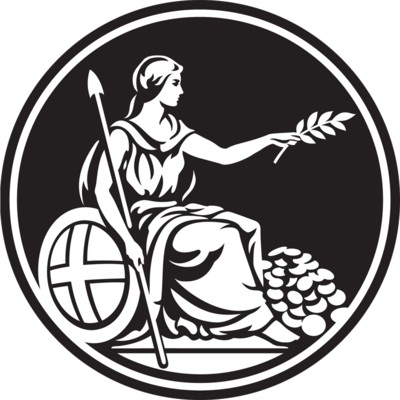The Fed's Tightrope: Interest Rates, Tariffs, and the Dollar's Decline
May 8, 2025, 9:53 am

Location: United Kingdom, England, London
Employees: 1001-5000
Founded date: 1694
The U.S. Federal Reserve is at a crossroads. As it stands, the central bank is expected to hold interest rates steady, a decision that may stir tensions with President Trump. The current rate, hovering between 4.25% and 4.5%, reflects a cautious approach amid economic uncertainty. Goldman Sachs predicts no cuts until July, citing a murky economic outlook influenced by ongoing trade wars.
The Fed's hesitance stems from the chaos created by tariffs. These tariffs have sent ripples through the economy, creating a fog that obscures the path forward. The Fed is wary of making hasty decisions that could exacerbate inflation, which is projected to remain high at 2.7% this year. Despite a recent dip in inflation, the Fed's leadership is poised to wait for clearer signals before acting.
Recent labor market data has painted a mixed picture. While some indicators suggest resilience, many economists fear a downturn is on the horizon. The Fed's dual mandate—to promote maximum employment and stable prices—hangs in the balance. If tariffs continue to bite, the Fed may find itself forced to act, even if it means risking inflation.
The stakes are high. Trump has been vocal about his desire for rate cuts, viewing them as a means to stimulate growth. However, the Fed is committed to its independence. Powell's response to Trump's demands will be closely scrutinized. Any hint of political pressure could shake market confidence.
Across the Atlantic, the Bank of England is watching closely. The MPC is expected to announce its own rate decision soon, with predictions leaning toward a cut. A weaker U.S. economy could dampen demand for British exports, creating a ripple effect.
Meanwhile, the U.S. dollar is facing its own challenges. UBS analysts have declared it in a "structural downtrend." The dollar has lost ground against the pound, which has surged nearly 10% since January. Analysts predict the pound could reach $1.39 by year-end, driven by expectations of a less aggressive rate cut from the Bank of England.
The dollar's decline is telling. It struggles to rally even amid positive news about potential trade deals. This behavior suggests deeper issues at play. If a currency can't gain strength on good news, it risks a sharp fall when bad news hits. The dollar's fragility is evident, as it has not only weakened against the pound but also against other major currencies.
UBS points out that while the dollar's decline has been broad, not all currencies have benefited equally. The Norwegian Krone and Australian dollar have lagged behind, indicating a selective recovery. The pound, however, is poised to catch up, especially against the euro. Analysts expect the euro to weaken against the pound, further solidifying the latter's position.
The Fed's decisions will be pivotal. If it chooses to hold rates steady, it may signal a commitment to stability in uncertain times. However, if economic conditions worsen, the Fed may have to pivot quickly. The balance between inflation control and economic growth is delicate.
As the Fed navigates this tightrope, it must remain vigilant. Tariffs pose a significant risk, and the economic landscape is shifting. The labor market may appear strong, but underlying vulnerabilities could surface. The Fed's cautious approach reflects a desire to avoid missteps that could lead to a recession.
In this complex environment, the relationship between the Fed and the White House is under scrutiny. Trump's recent attacks on Powell have softened, but the tension remains. The independence of the Fed is crucial for maintaining market confidence. Any perceived interference could send shockwaves through the financial system.
The upcoming FOMC meeting will be a critical moment. Powell's words will carry weight. Investors will be listening for clues about the Fed's future direction. The interplay between interest rates, tariffs, and currency values will shape the economic landscape in the months to come.
In conclusion, the Fed is walking a tightrope. It must balance the demands of the economy with the pressures from the White House. The dollar's decline adds another layer of complexity. As the situation evolves, all eyes will be on the Fed. Its decisions will have far-reaching implications, not just for the U.S. economy, but for the global financial system. The stakes are high, and the path forward is anything but clear.
The Fed's hesitance stems from the chaos created by tariffs. These tariffs have sent ripples through the economy, creating a fog that obscures the path forward. The Fed is wary of making hasty decisions that could exacerbate inflation, which is projected to remain high at 2.7% this year. Despite a recent dip in inflation, the Fed's leadership is poised to wait for clearer signals before acting.
Recent labor market data has painted a mixed picture. While some indicators suggest resilience, many economists fear a downturn is on the horizon. The Fed's dual mandate—to promote maximum employment and stable prices—hangs in the balance. If tariffs continue to bite, the Fed may find itself forced to act, even if it means risking inflation.
The stakes are high. Trump has been vocal about his desire for rate cuts, viewing them as a means to stimulate growth. However, the Fed is committed to its independence. Powell's response to Trump's demands will be closely scrutinized. Any hint of political pressure could shake market confidence.
Across the Atlantic, the Bank of England is watching closely. The MPC is expected to announce its own rate decision soon, with predictions leaning toward a cut. A weaker U.S. economy could dampen demand for British exports, creating a ripple effect.
Meanwhile, the U.S. dollar is facing its own challenges. UBS analysts have declared it in a "structural downtrend." The dollar has lost ground against the pound, which has surged nearly 10% since January. Analysts predict the pound could reach $1.39 by year-end, driven by expectations of a less aggressive rate cut from the Bank of England.
The dollar's decline is telling. It struggles to rally even amid positive news about potential trade deals. This behavior suggests deeper issues at play. If a currency can't gain strength on good news, it risks a sharp fall when bad news hits. The dollar's fragility is evident, as it has not only weakened against the pound but also against other major currencies.
UBS points out that while the dollar's decline has been broad, not all currencies have benefited equally. The Norwegian Krone and Australian dollar have lagged behind, indicating a selective recovery. The pound, however, is poised to catch up, especially against the euro. Analysts expect the euro to weaken against the pound, further solidifying the latter's position.
The Fed's decisions will be pivotal. If it chooses to hold rates steady, it may signal a commitment to stability in uncertain times. However, if economic conditions worsen, the Fed may have to pivot quickly. The balance between inflation control and economic growth is delicate.
As the Fed navigates this tightrope, it must remain vigilant. Tariffs pose a significant risk, and the economic landscape is shifting. The labor market may appear strong, but underlying vulnerabilities could surface. The Fed's cautious approach reflects a desire to avoid missteps that could lead to a recession.
In this complex environment, the relationship between the Fed and the White House is under scrutiny. Trump's recent attacks on Powell have softened, but the tension remains. The independence of the Fed is crucial for maintaining market confidence. Any perceived interference could send shockwaves through the financial system.
The upcoming FOMC meeting will be a critical moment. Powell's words will carry weight. Investors will be listening for clues about the Fed's future direction. The interplay between interest rates, tariffs, and currency values will shape the economic landscape in the months to come.
In conclusion, the Fed is walking a tightrope. It must balance the demands of the economy with the pressures from the White House. The dollar's decline adds another layer of complexity. As the situation evolves, all eyes will be on the Fed. Its decisions will have far-reaching implications, not just for the U.S. economy, but for the global financial system. The stakes are high, and the path forward is anything but clear.
